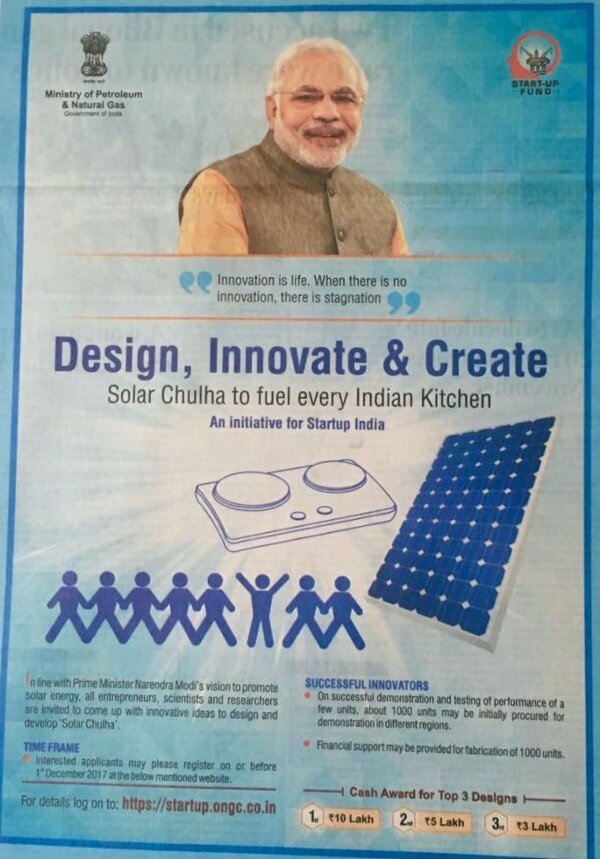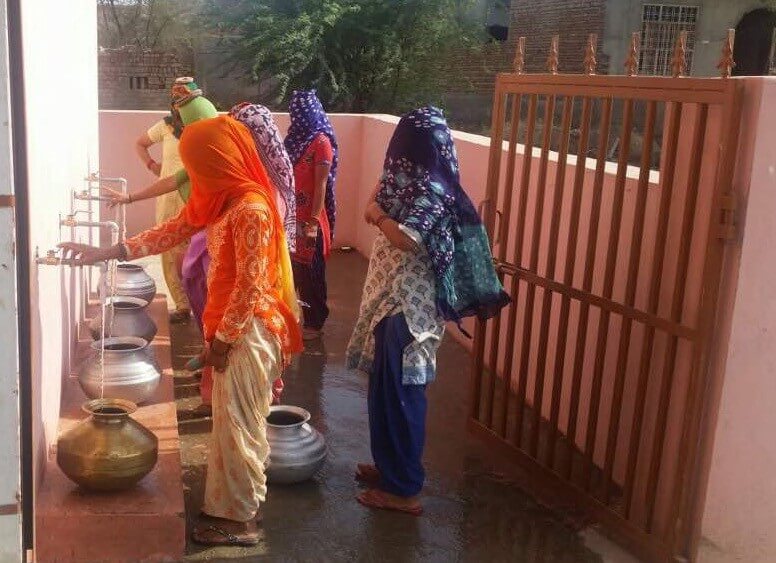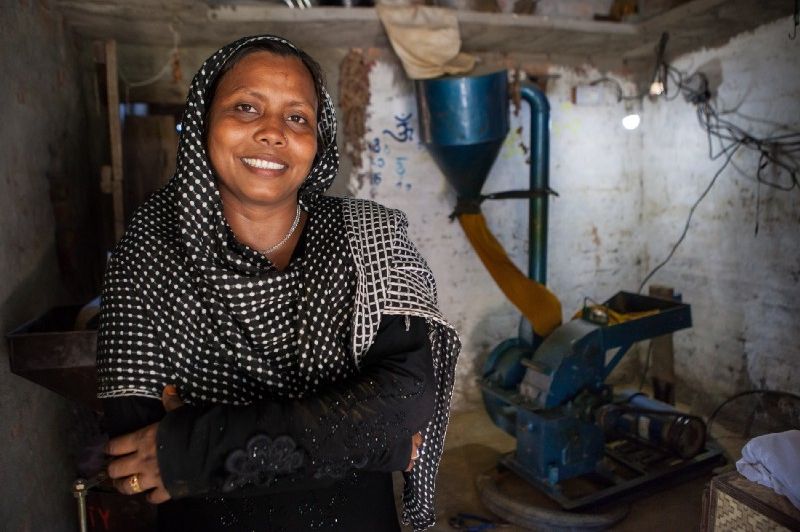A growing movement of companies and civil society groups is helping women in rural India become solar entrepreneurs and improve their livelihoods. Now the key is scale.
Perhaps the most exciting outcome in India of distributed renewables (solar lighting, home solar systems or mini-grids) is the impact on women. Signs are growing of the potential for these solutions to alter the gender balance in a country where sexual discrimination and assault are still far too prevalent.
Social enterprises like Frontier Markets and Dharma Life are on the frontlines, with the support of IFC Lighting Asia. Frontier has empowered thousands of rural women to become sales agents for solar products (on average making an additional $400 in income). Similarly, Dharma Life is identifying, training and mentoring aspiring women candidates to become rural entrepreneurs and social change-makers in their villages.
Increasingly there is a focus on how to scale these efforts, says Anjali Garg, program manager at IFC’s Lighting Asia/India.
“Dharma Life Entrepreneurs” — unemployed, young women trained to be solar entrepreneurs in their villages across five states of India.
The UN Women program, Women’s Entrepreneurship for Sustainable Energy (WESE), is one such attempt. UN Women partnered with the Indian government, which committed $5 million over 5 years to work with 100,000 disadvantaged women in gaining better access to energy. The program will identify gender specific structural barriers faced by women entrepreneurs, encourage productive use of energy, increase women’s participation and promote women leadership in gender-responsive energy policy making.
Another way to scale is through collaboration. Recently, Frontier Markets and Barefoot College announced a partnership to create a network of more than 2,000 female engineers and entrepreneurs to reach 200,000 households. Together, they will establish 100 “solar demo hubs” in rural areas, starting in India’s Rajasthan state, with plans to expand to 5 states in India and 10 countries internationally.
“For India’s rural poor, especially women, these clean energy positions offer a lucrative alternative to subsistence farming,” a new report by World Resources Institute (WRI) India said.
Entrepreneurship is just one aspect of the linkage between distributed solar and gender equality. Other benefits include better access to potable water, pumped water for irrigation, new opportunities for skills training (powered by clean energy mini-grids) and increasing agricultural productivity.
Smart Power India has electrified 8 villages in Jharkhand state with green mini-grids. For women processing rice, new electric hullers have increased daily output 100x from 20kg to 2,000kg
For example, a Smart Power India project that provides women villagers in Jharkhand state access to electric rice hullers has resulted in a 100-fold increase in output. Rural development group Jeevika has also made women central to the roll-out and operation of mini-grids in rural villages in Bihar state that provide household electricity and power for crop irrigation. The introduction of electric roti-rolling machines is doubling women’s income and giving them access to finance thanks to SELCO Foundation. Other examples of women empowerment through electricity access are occurring for tailors, dairy farmers, retailers and many other rural vocations.

Moreover, India is also pushing for innovations in clean cooking that could take advantage of the explosion in distributed solar in India. Recently it launched an innovation challenge to design an induction cookstove that costs less than 10,000 rupee ($155) and would be plug-and-play with solar home systems and mini-grids. About 700 million people in India live in households that cook every day with simple “chulhas” (stoves) using locally gathered biomass for fuel. This contributes to the premature death of more than 800,000 Indians each year, with the greatest risk for women and children.
Gathering biomass fuel takes productive time away from women. Similarly, fetching clean water, often from long distances, can also take a few hours daily. In several states, new mini-grid powered purification plants are bringing clean water to communities, helping to free up that time.

Despite all of the progress, there is still more work to be done in India on the link between electricity access and women, as a pair of researchers stressed in this recent commentary, noting that gender justice is a glaring omission within India’s energy planning, and calling for more affirmative policies to remedy the situation.
“Policy is silent about enhancing energy use for productive purposes so as to create rural employment, particularly for women through decentralized renewable systems,” wrote TERI researchers Dr. Mini Govindan and Debajit Palit.
Today, only 20% of the global renewable energy workforce is women, yet women entrepreneurs can demonstrate more than twice the business capacity and success of men. In India, 74.8 percent of rural women in India are agricultural workers but only 9.3 percent own the land, while more than 80 percent are also employed in vulnerable jobs that lack the protection of labor laws, according to UN Women.
For more detail on the global link between Sustainable Development Goal (SDG) 7 — access to modern, affordable, reliable and sustainable energy — and SDG5 — gender equality and women’s empowerment— see the Empowering Women As Sustainable Energy Leader fact sheet from Power for All.
